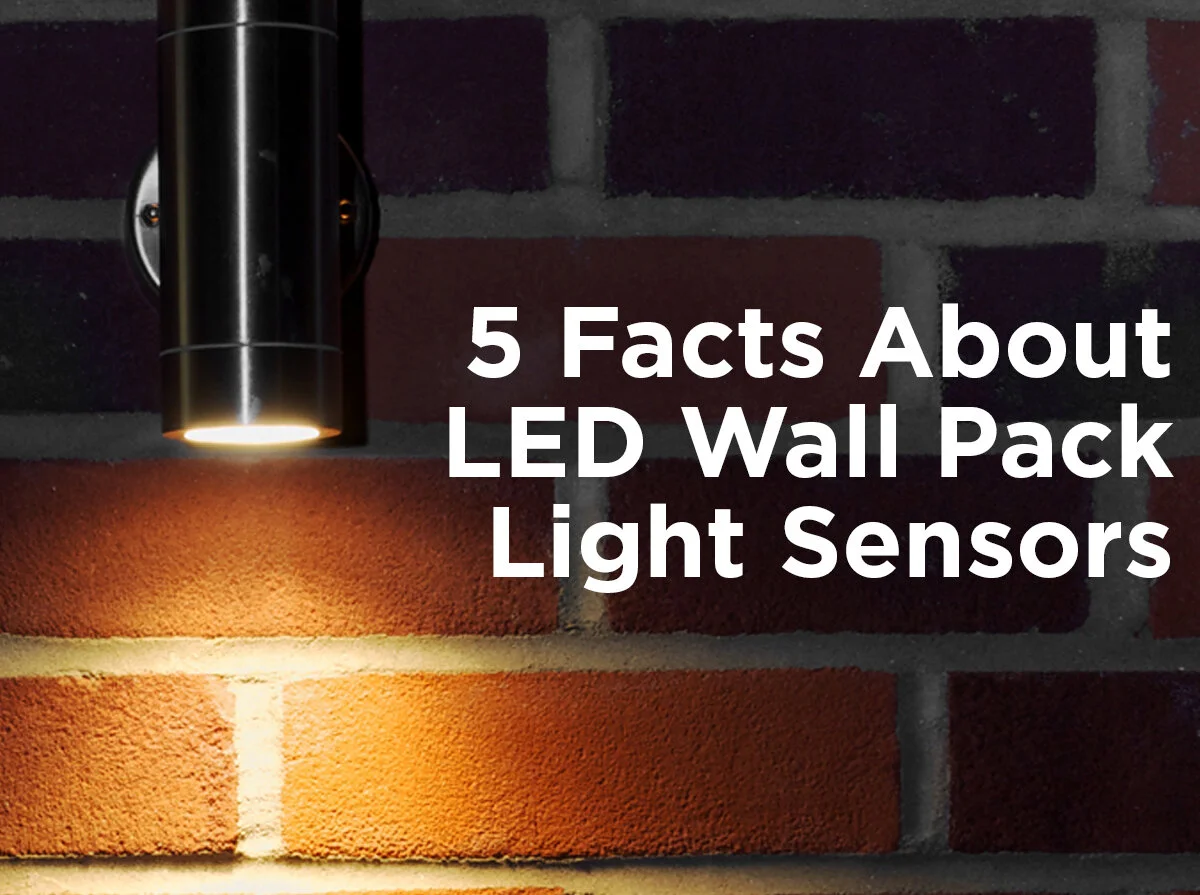5 Facts About LED Wall Pack Light Sensors
Read all 12 reviews.
165 Watt Equal LED Wall Pack
LED wall packs, commonly installed on the sides of buildings, are also used in parking garages, tunnels, building entrances and walkways to provide accent and security lighting. While you can turn wall packs on and off manually or install timers, one of the most energy efficient methods for making sure the lights are on only when needed is to connect wall packs to light sensors. Photo controls can turn lights on at night and off in the daylight, without requiring you adjust the schedule as daylight becomes longer or shorter during the year. Here are some little known facts about light sensors that will help you when implementing lighting controls.
1. Why You Should Point Light Sensors North
Most applications in the northern hemisphere use a north-facing sensor because it gives the sensor the most balanced on-off schedule with the arc of the sun. Assuming that the sensor has a clear view in all directions, an east facing sensor will turn the lights on and off early while a west facing sensor will turn lights on and off late. If installed on a south side of a building, face the sensor, east, west, or down at the ground.
2. Why You Shouldn’t Point Light Sensors South
Those of us in the northern hemisphere shouldn’t point light sensors south because of how the sun arcs. Sensors pointing south are exposed to the most direct sunlight. Photocells (light sensors) facing towards the north will detect light without as much direct sunlight on the sensor. Exposing a photo sensor to too much direct sunlight can burn out the components and cause premature failure. If you can’t point a photocell north, point it northeast or northwest depending on if you’d rather have the lights turn on and off a little early or a little late. The opposite is true south of the equator.
3. LED Wall Packs Require LED Compatible Sensors
If you’re retrofitting or replacing conventional wall packs with LED wall packs, you also need to replace the photo sensors. Each sensor mounting type is divided into conventional or LED compatible sensors so you know you’re picking the right type. A conventional light sensor will still operate an LED wall pack when first installed, but burn out prematurely. This will most likely leave the wall pack on during the day until the sensor is replaced.
4. Photo Controls Can Be Mounted Remotely
One of the simplest methods for mounting a photo controller is with a stem mount. Stem mounted light controls can be mounted remotely, so LED wall packs on the south side of a building can be controlled by a photo sensor facing north. A more flexible version is the stem and swivel mount for sensors placed in shade or blocked by objects. If you have a north facing wall and want a control that blends into the environment, you may prefer fixed position mounting photo controls. These are a simple plate bolted to either the side of the building or the side of equipment. However, unlike the other mount types, these sensors do not have a shield, which can be adjusted to block the sensor from seeing artificial light. Lock-type mounting is available for photo controls where accidental impact is a concern. The NEMA-rated twist locks mitigate vibrations and prevent disconnects if the unit is bumped.
5. Knowing Your Line Voltage is Important
Read all 3 reviews.
120 Volt Light Sensor
LED wall packs can frequently support a wide range of voltage like the AC Electronics 165 Watt equal LED wall pack rated for 120-277 volts or the PLT 250 Watt Equal LED wall pack rated for 100-277 volts. Photo sensors have a narrower range so it’s important to know the line voltage of the application prior to purchase and install. While some photo sensors are rated 120-277 volt or a narrower 200-240 volt rating, many are only rated for 120-volt applications. Installing a light sensor that does not match the line voltage powering the control could result in the light staying on if the line voltage is lower than the sensor. If the line voltage is higher than the sensors rating, the light may not turn on. Using a light sensor with the wrong line voltage could also burn out the sensor and cause electrical problems.
Not sure which mount type works for your building? Give us a call at (800) 624-4488 ext. 2534 and our expert staff will help you through the process. You can also leave your questions or other lesser known facts about light sensors and wall pack lighting in the comments section below. Follow us on LinkedIn, Facebook, and Twitter for more ways you can lower operating costs and save money for your business.









